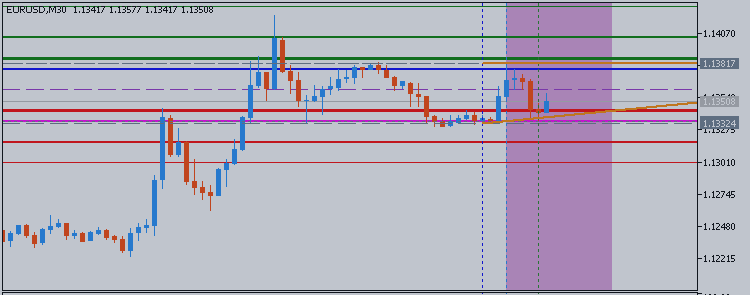
How To Trade - Trading Reversals with Camarilla Pivots for Support & Resistance
Markets are prone to turn at existing points of support and resistance, so the first step is to identify these points on your chart. To simplify the process, for today’s “DT Pivot” strategy, we will be adding camarilla pivots to the chart. These lines are calculated using percentages of the previous day’s trading range which, when added to the graph, creates a clear idea of where price may be supported or reach a barrier of resistance.

As seen above, Camarilla Pivots label resistance lines R1-R4, and
support lines S1-S4. R4 and S4 are considered extremities in
price—demoting a breakout. Traders looking for short term reversals
should focus on price movements between the S3 and R3 pivots. This is
known as the trading range, and can afford traders short term day
trading possibilities if price stays between these values.

Now that support and resistance have been identified, through the use of
camarilla pivots, traders can begin planning their entry. The key is to
sell the market at resistance. This can be done once price has touched
the R3 pivot and a 30 minute bar closes inside the pivot range.
Conversely, traders should look to buy the market after price touches
the S3 pivot, but only after a 30 minute bar closes inside the pivot
range. Since candle confirmation is used with the “DT Pivot”strategy,
traders can enter into a trade using market orders.
Above we can see several sample entries using this order logic. First,
Entry 1 would be considered after the first highlighted wick passes
through the R3 line of resistance. However, execution would not occur
until the bar closed inside of the range on the 30 minute chart. At this
point traders would look to sell the market in anticipation of a
reversal back to support. For Entry 2 the same rules apply, however
traders will look to buy at support. After price tests the s3 pivot, and
price closes inside of the range, traders will execute a new buy
position. Once a trade is entered it is time to plan the exit strategy.

Traders should always have a plan for managing their position. Eventually the range will come to an end and any existing trades should be exited. When initiating a buy order, stop orders should be placed at the S4 pivot. That way if prices break to a lower low, all buy trades will be closed. Conversely if a trader is selling resistance at the R3 pivot, stops can be placed at the R4 pivot as seen above.


